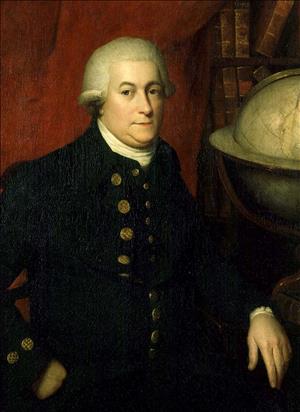On May 19, 1792, the British sloop-of-war Discovery drops anchor between Bainbridge and Blake islands. The following morning, Capt. George Vancouver (1757-1798) dispatches Lt. Peter Puget and Master Joseph Whidbey to conduct a detailed survey of the waters to the south. This is the first penetration of "Puget's Sound" by Europeans.
Lt. Puget shoved off at 4 a.m. on May 20 in a launch, escorted by Whidbey in a cutter, on a six-day tour of the southern sound. The Vancouver expedition charted and named numerous landmarks, including Mount Rainier (for British Admiral Peter Rainier), Whidbey Island, Hood Canal, and of course, Puget Sound (which originally denoted only the waters south of Bainbridge Island). Contacts with local inhabitants were cordial if mutually wary, and legend maintains that a very young Chief Seattle (178?-1866) witnessed Vancouver's arrival on Puget Sound.
Although anchored directly across from the future city of Seattle, Vancouver evinced no interest in the area. His goals were much bigger: to discover the fabled Northwest Passage linking the Pacific and Atlantic oceans, and to fly the Union Jack in waters that were attracting ships from Spain and from the newly independent United States of America.
Vancouver died in England on May 10, 1798, while preparing the report on his expedition.

